Multileader blocks, clever grafting and crop load management dominated the topics during the February tour of the International Fruit Tree Association through Central Washington’s Yakima Valley.
The six stops all represented transition, said Dave Gleason, the IFTA board member who organized the swing through the area of arid ridgetops flanking the Yakima River, which provides the irrigation water on which the region’s hops, dairies, wine grapes and tree fruit depend.
In recent years, apple growers in the area have been excited about multileader tree architecture, formal lateral training and mathematical crop load management, said Gleason, a horticulturist for Domex Superfresh Growers of Yakima. Many growers move in those directions through grafting and new plantings; others make minor adjustments year to year.
But change is constant, Gleason said. “They understand they can’t stay static,” he said.
Related:
Sundquist Fruit
At Sundquist Fruit and Cold Storage, east of Yakima, Andrew Sundquist showed recent grafts made to transition an old block of Brookfield Gala on M.26 rootstocks to multileader WA 38, the apple marketed as Cosmic Crisp.
At 14- by 5-foot spacing, the block has 622 trees per acre. But crews trained four grafts per trunk horizontally, and each will eventually support three or four upright leaders, creating about 8,000 leaders per acre, all on V-trellis.The company tried small plots of the same grafting technique with Envy and Honeycrisp, but fast-growing WA 38 worked best, he said.
“You need a lot of vigor to make it work,” he said.
To control vigor and ease pressure on the graft union, crews crossed the whippy scion leaders as they laid them onto the bottom wire in 2023, the first year of training.
Scion rooting is one of the challenges of grafting, Sundquist said. Root pruning helps, while crews have also been known to use an ax and hoe to cut out scion root growth.
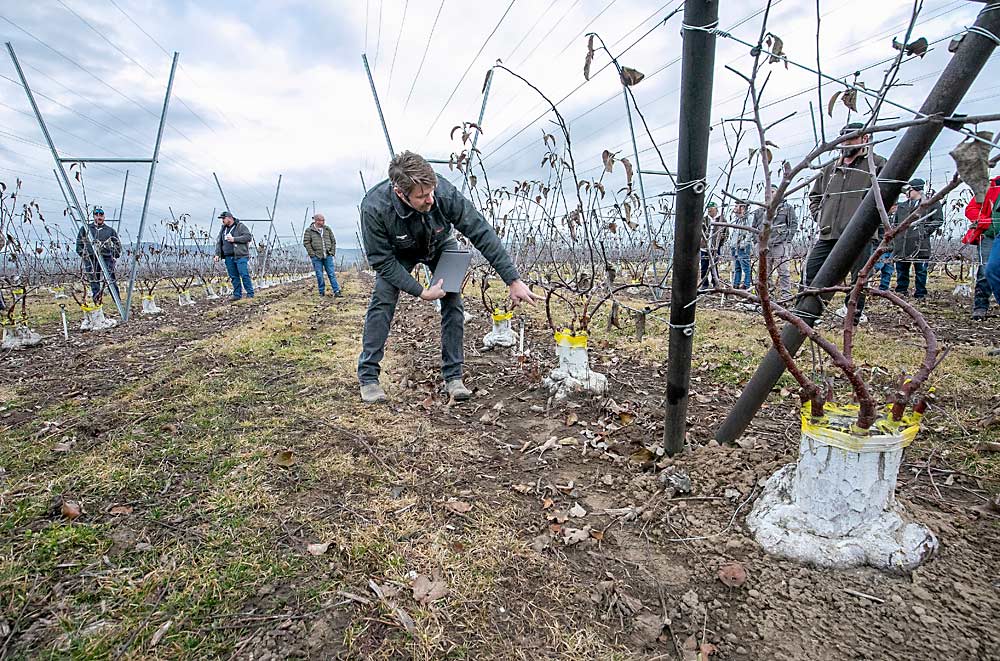
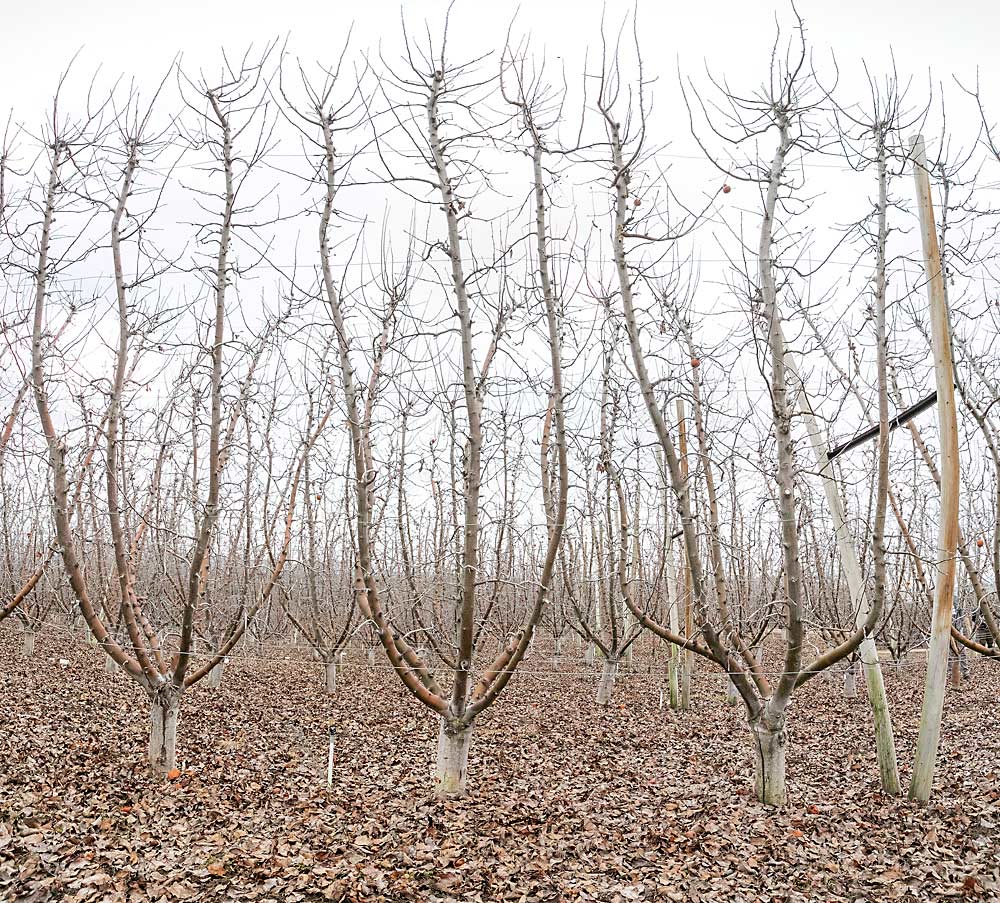
Sundquist also showed the group six-leader Fujis on M.7 rootstocks grafted over from Braeburn in 2011. In hindsight, he would have spread the ample vigor into even more leaders or used a formal V-trellis training, he said.
His final showcase was a block of Envy planted on G.11 roots with three leaders on each tree — alternated 2-to-1 on each side of the V-trellis — with irrigation and overhead fogging 100 percent automated.
Sundquist’s primary goal is to increase production of target fruit, though the planar systems should allow for platforms and other labor aids, he said.
Chiawana Orchards
At Chiawana Orchards, west of Yakima, area manager Paul Cathcart discussed crop load management on two blocks of single-leader Honeycrisp planted in 2010 with laterals formally trained to seven wires at 9- by 3-foot spacing.
One was on B.9 rootstocks and the other on M.26, and the vigor was noticeably different. The B.9-rooted trees often hadn’t filled canopy space near the top wire, while M.26 trees sometimes grew too fast, Cathcart said. However, to keep pruning and thinning instructions as simple as possible, he instructs his crews to space buds by stretching their thumb and pinky into “horns.” That spacing helps each tree set the number of fruits it can support.
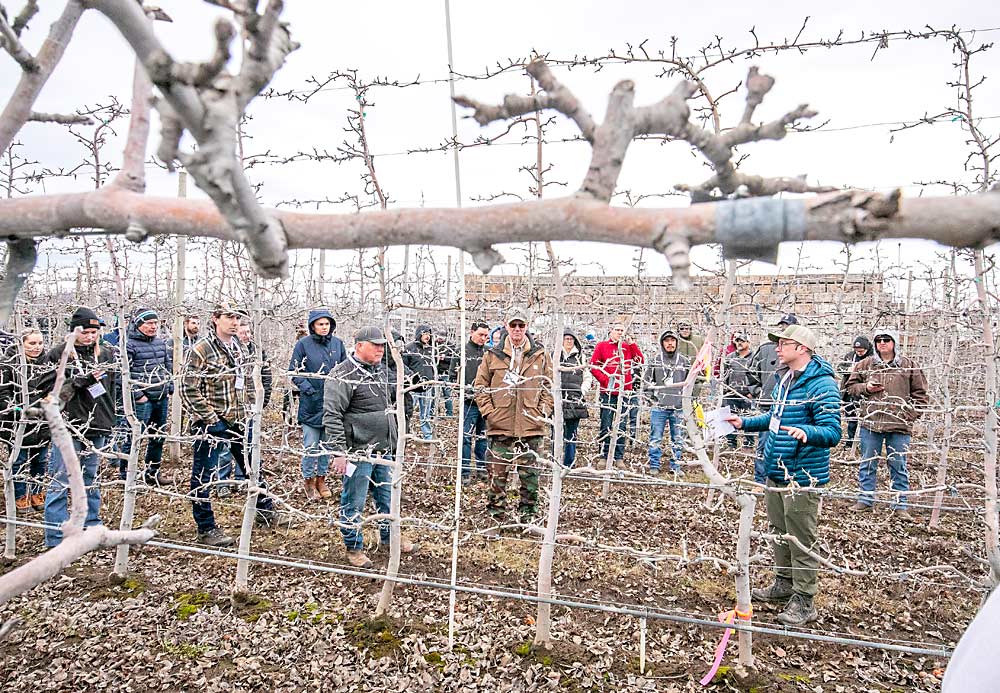
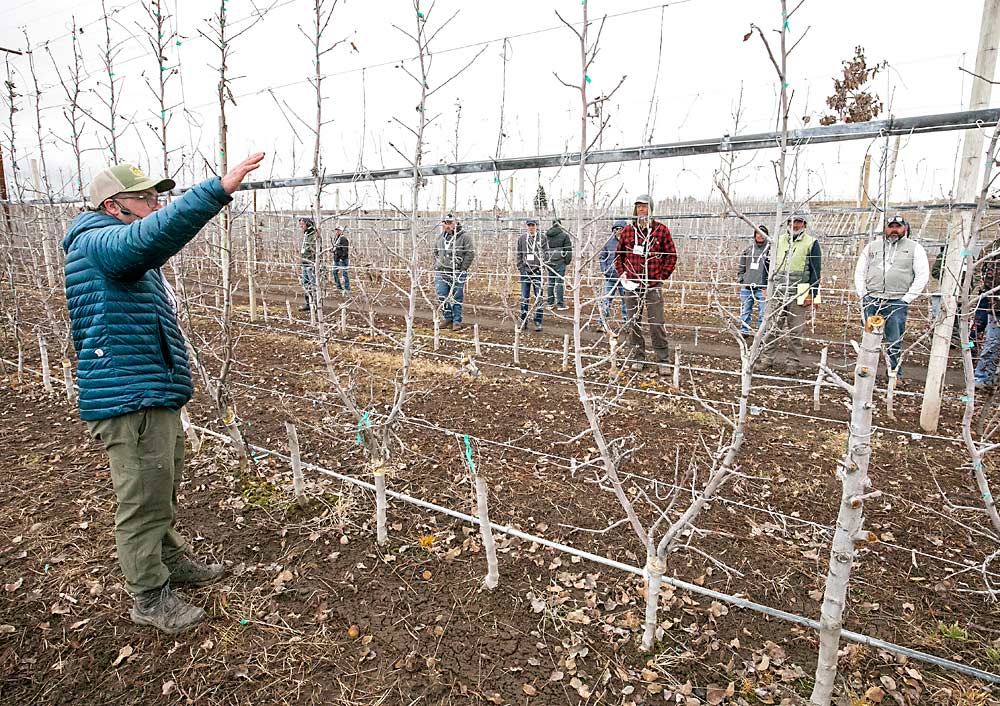
The system was expensive to set up — $1,500 per acre just to tie down limbs. But it also has been expensive to maintain as the spurs get more complex with tree maturity, he said. With permanent limbs, pruners are making 10 to 15 detailed cuts per wire for each tree.
“Don’t think, ‘Well, my tree training’s gonna be expensive, but the pruning is gonna be cheap,’” he said. “That’s not the way it works out.”
Cathcart also showed a double-leader Honeycrisp block on G.41 rootstocks grafted from Koru. The farm grafted in 2021 but left every other Koru tree alone while the grafted trees grew, so the block never completely lost production. Crews are removing the remainder of the Koru trees this spring.
Gilbert Orchards
At Gilbert Orchards, also west of Yakima, geology enthusiast Cragg Gilbert drew chuckles from tourgoers with a treatise on 17 million years of lava flows and ice age floods that gave Central Washington its fertile topsoil.
However, only a thin layer of that ancient soil reached Gilbert Orchards’ site, perched about 1,400 feet above sea level, said Sean Gilbert, Cragg’s son.
“What that gives us is a challenge of getting enough vigor into our trees, to be able to fill out the space and get economical yields,” he said. On the other hand, the site stays a bit cooler, great for coloring Honeycrisp that also store well.
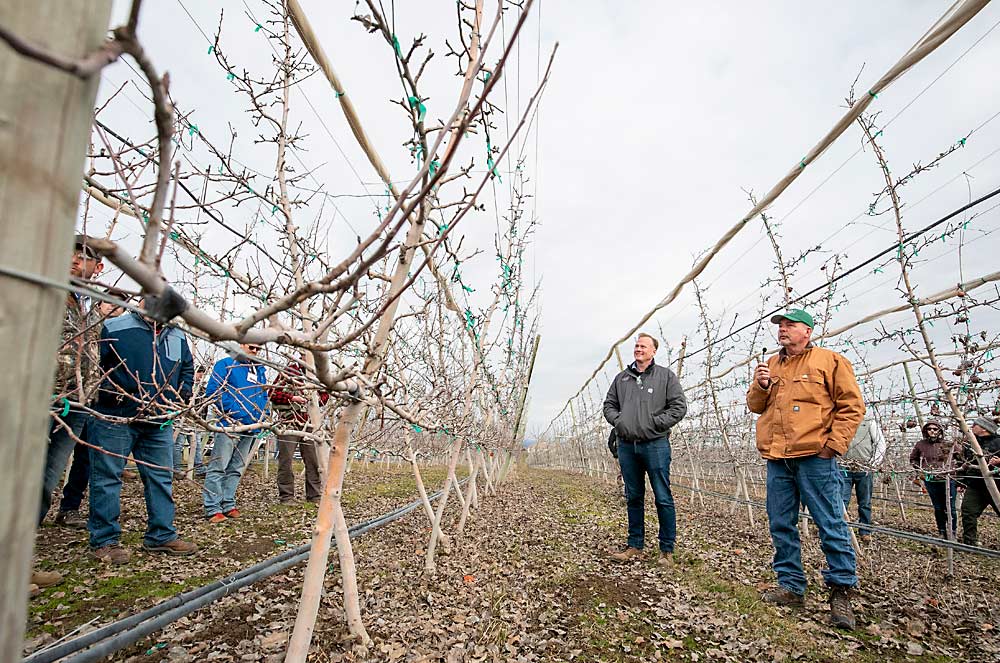
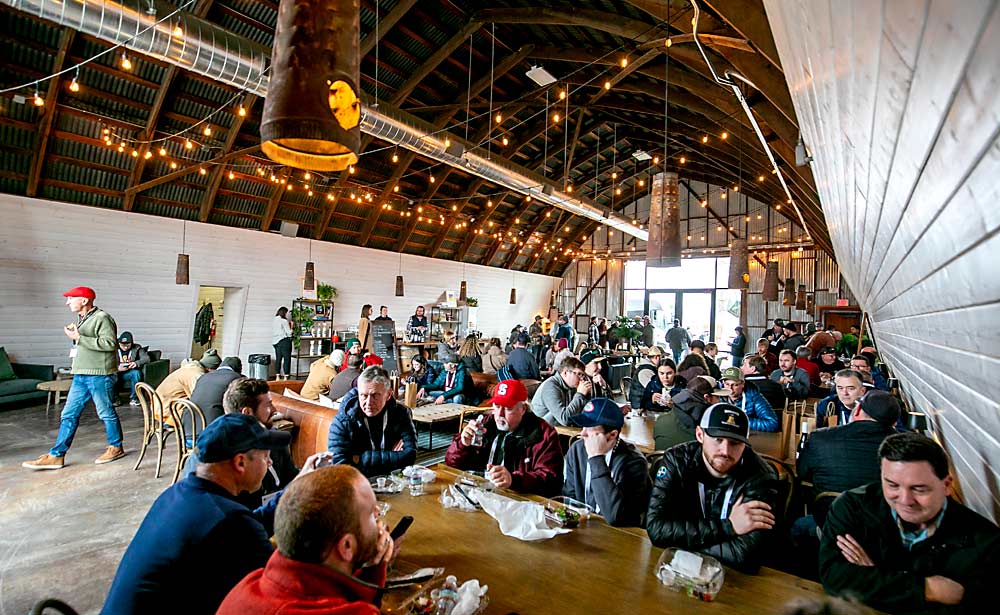
Sean Gilbert and orchard manager Chris Peters showed three Honeycrisp blocks. The first, planted in 2004 on M.7 rootstocks, grew and filled its space. Right beside it is a block on G.890, which grew early, but the farm cropped the block too soon, they said, and the trees have since struggled to fill space near the top wire. Just to the west sits a block planted in 2022, also on G.890. The crews will not crop it this year — third leaf — to make sure it grows.
Gilbert Orchards has Honeycrisp blocks in warmer sites with deeper soils and fewer vigor struggles, Sean Gilbert said.
Hearing about such inevitable setbacks is “reassuring,” Rafael Abundiz, an area manager for Columbia Fruit Packers, told Good Fruit Grower after the Gilbert stop. He, too, in the past has overcropped Honeycrisp early, only to leave young trees with too little vigor.
Cornerstone Ranches
Cornerstone Ranches, south of Yakima, provided a lesson in balancing changes while sticking with what works. The farm adopted a three-leader V-trellis architecture 20 years ago and finds it adaptable to any variety, said Graham Gamache, a third-generation tree fruit farmer.
“All we have to do when the market dictates that it’s time to switch varieties is cut the tree down and graft the new wood in,” Gamache said.
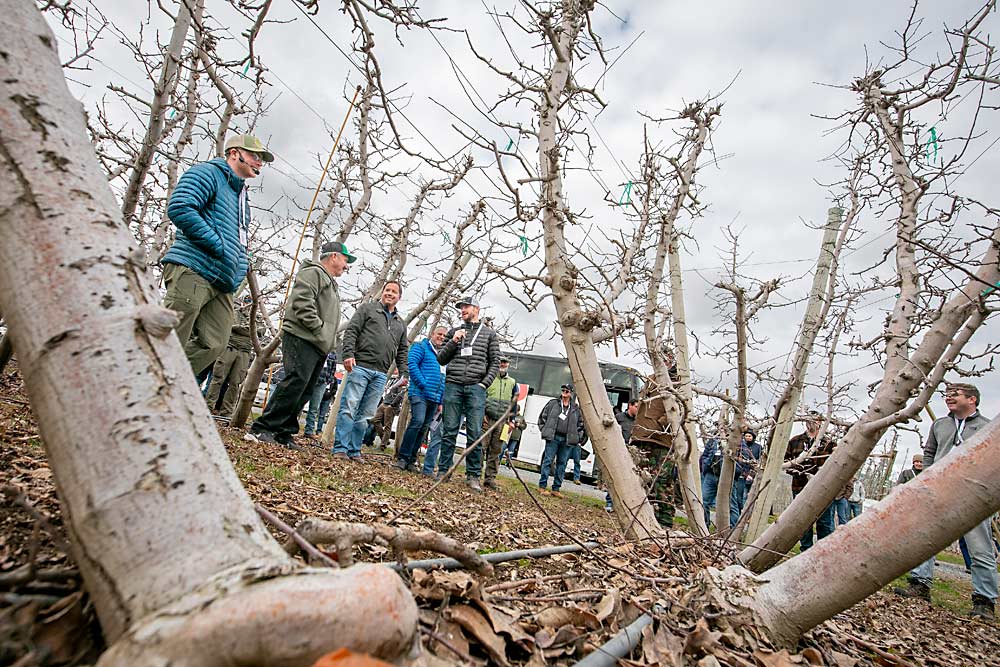
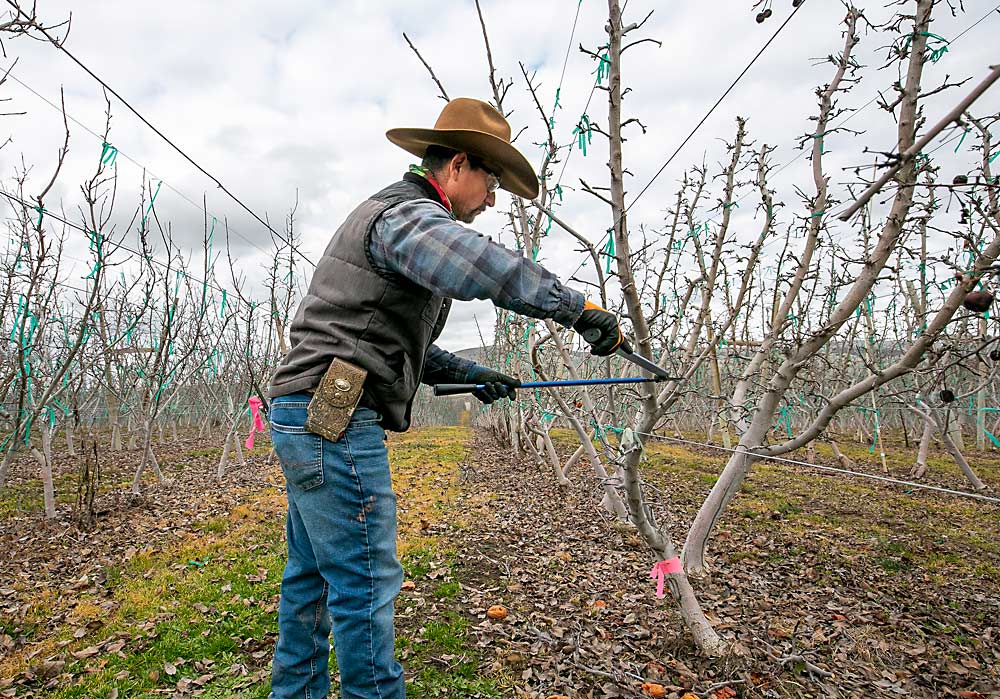
They showed examples of the three-leader system in a 2004 planting of Golden Delicious and 2013 planting of Buckeye Galas. Both yield more than 70 bins per acre and fetch good prices in the export market, Gamache said.
The system has allowed for minor changes over the years. For example, row spacing started at 14 feet in the 2004 block but is now 12.
Meanwhile, Gamache and his orchard manager, Javier Ramos, have narrowed the V from a 6-foot crossbeam to a 4-foot beam, creating better light exposure and spray coverage. The steeper architecture also inhibits inside growth and is easier for crew members to access. Turns out, it also leaves room for a leaf blower to pass through the rows, a tool that the business — normally “conservative” with technology adoption — now uses routinely, Gamache said.
Washington Fruit
At Washington Fruit and Produce Co.’s Grandview farm, area manager Ramon Cuevas and company horticulturist Andrew del Rosario described an aggressive pruning strategy on a block of Buckeye Gala on M.9-337 rootstocks planted in 2015.
Crews don’t prune anything until they sample buds, labeling metrics on flagging tape with the date, target bud count, actual bud count and trunk measurement. Managers audit the bud counters, too.
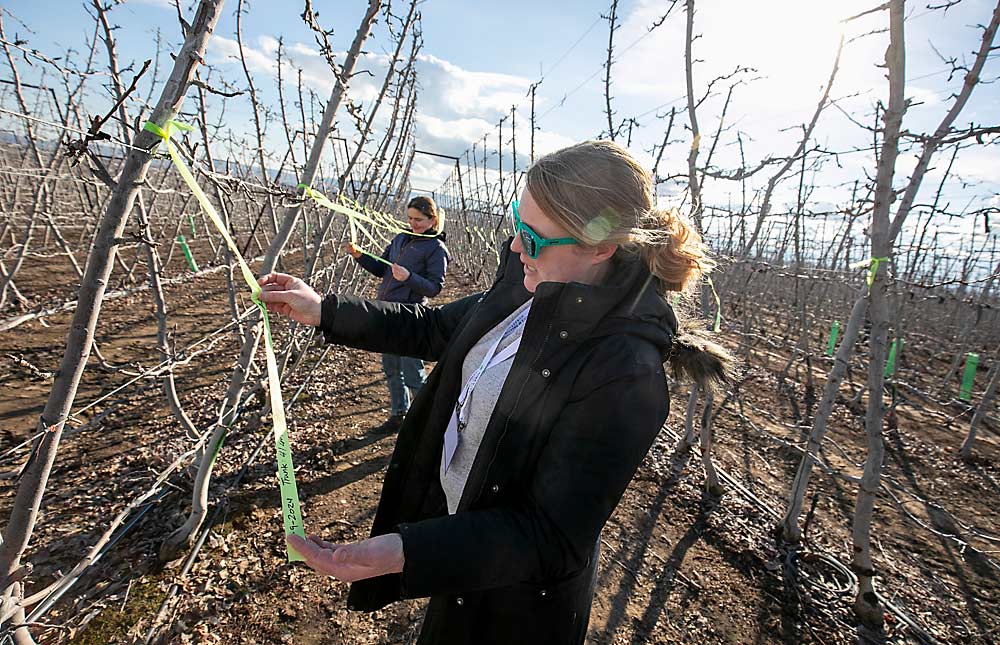
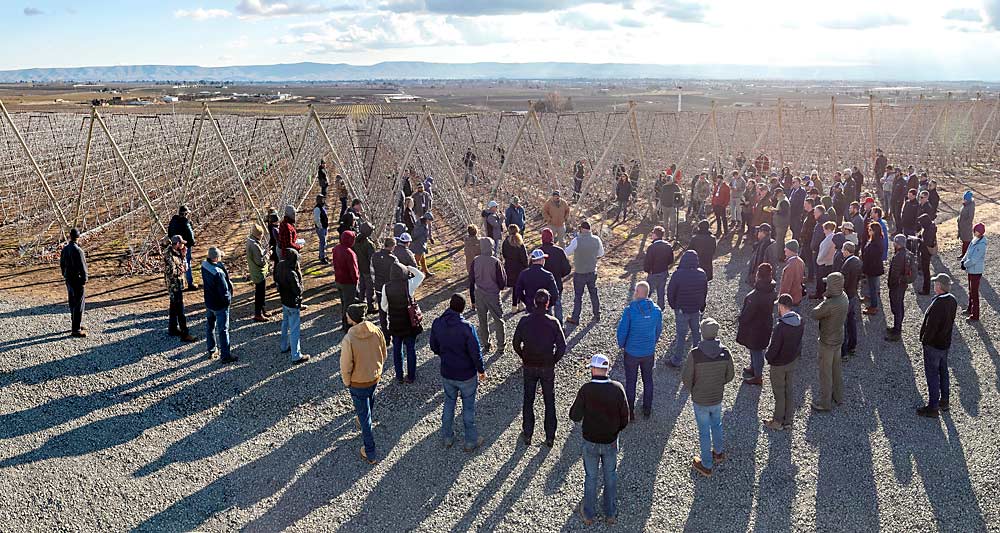
The crop load goal for that block is 90 bins per acre, which works out to 110 buds per tree. To keep instructions simple for pruning crews, supervisors break that down into a distance between spurs. They also tell crews to cut 1-year-old wood longer than 4 inches down to three buds and break up clustered spurs.
The goal is a 1-to-1 ratio of fruit to spurs. It seems risky, Cuevas said, but harvest crews always deliver at or near goals.
If they prune too hard, they can adjust at bloom thinning, and they usually leave some extra flowers per bud, depending on variety. If they play their cards right, they won’t need to thin at green fruit.
“The biggest thing is we gotta trust the numbers,” he said.
Allan Bros.
The conversation got more mathematical and a bit philosophical at an Allan Bros. farm near Grandview. Managers and researchers admitted they have unanswered questions about crop load management as the group pondered an Envy block on M.9 rootstocks at 14- by 3-foot spacing and a block of Honeycrisp on M.26 rootstocks at 13- by 7-foot spacing, both grafted into multileader systems.
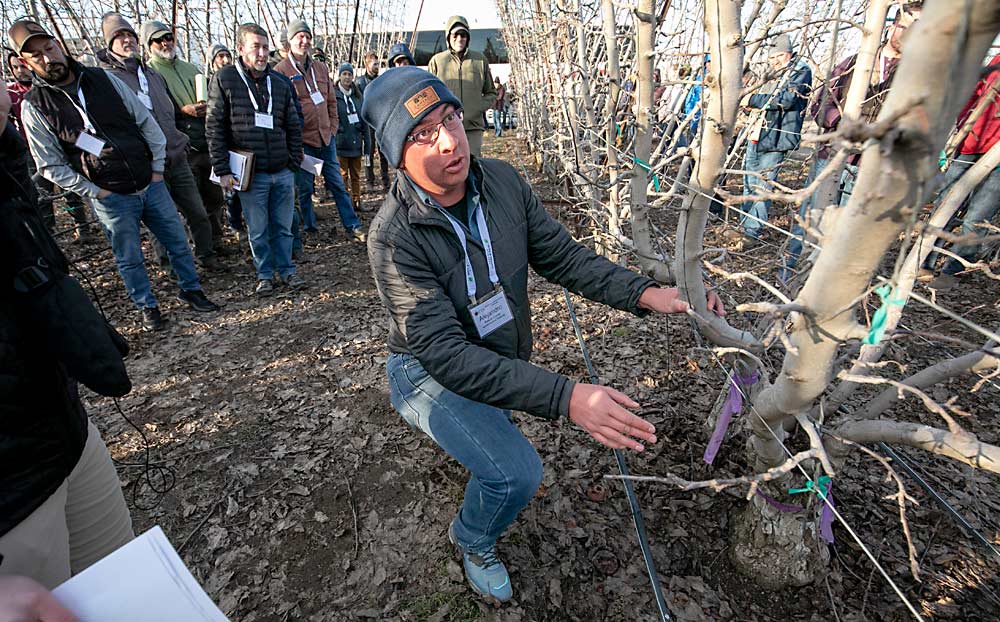
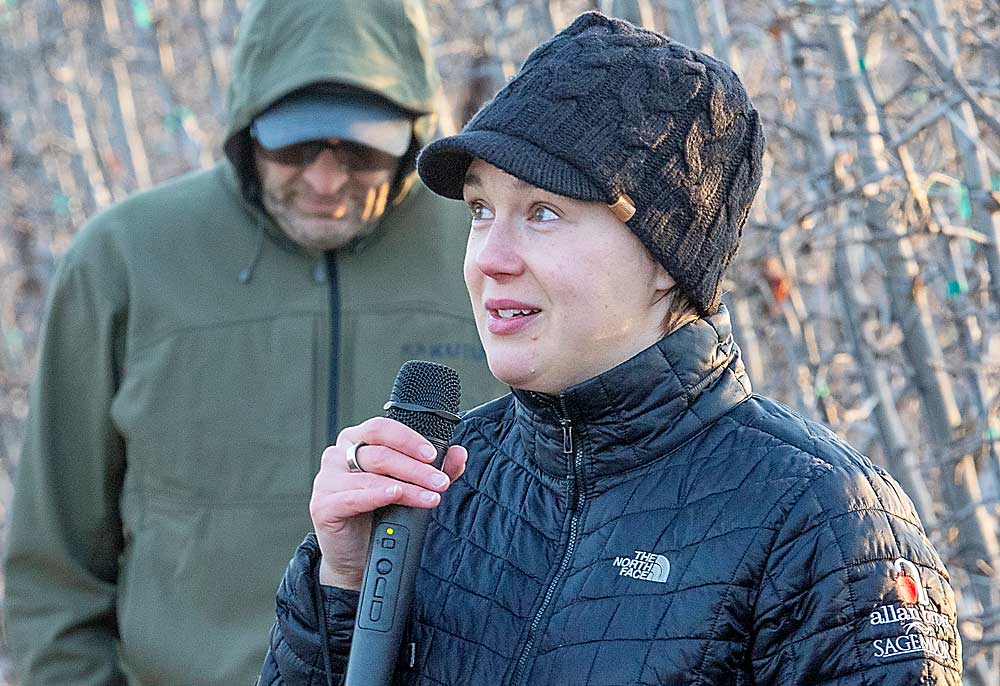
Suzanne Bishop, research and technology manager, and Luke Anderson, area manager, discussed their shift from aiming for an arbitrary number of buds per tree or branch to a coefficient of buds per cross-sectional area. That way, the tree physiology is driving the decision, Anderson said.
But do you measure the trunk, the base of the leaders or lateral branches? Each one yields vastly different numbers, Bishop said. Tour participants also questioned how the cross-sectional area calculation might change with tree maturity.
“This is something we’re still trying to figure out,” Bishop said.
—story by Ross Courtney / photos by TJ Mullinax
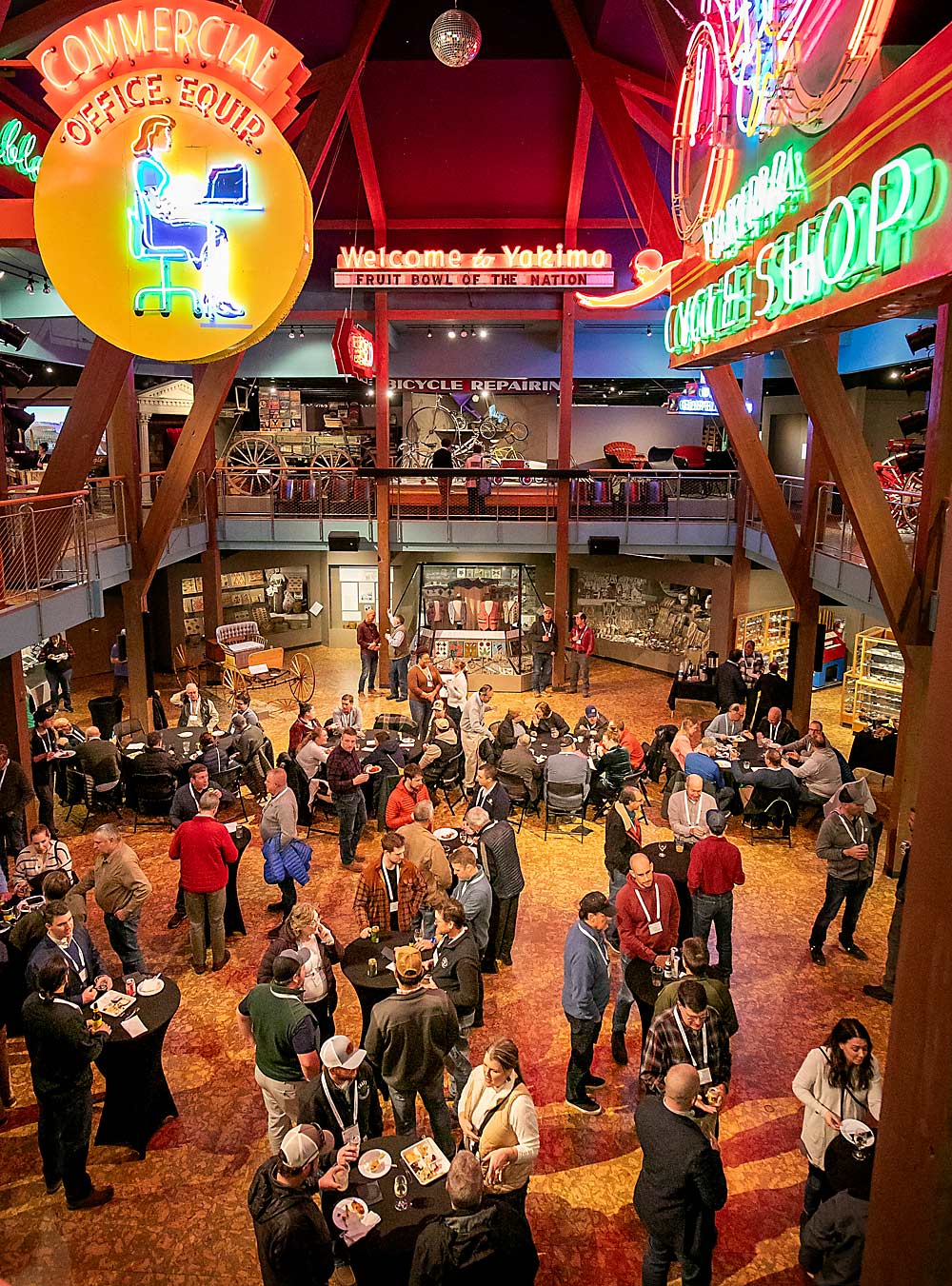

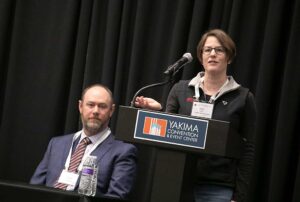
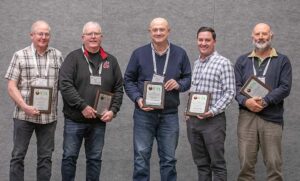
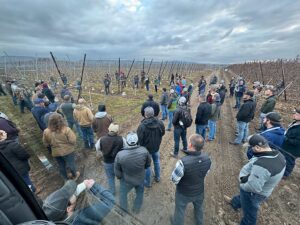
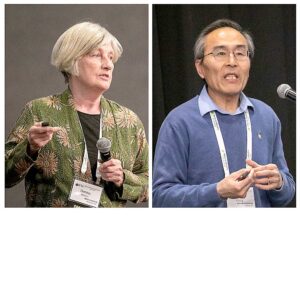





Leave A Comment